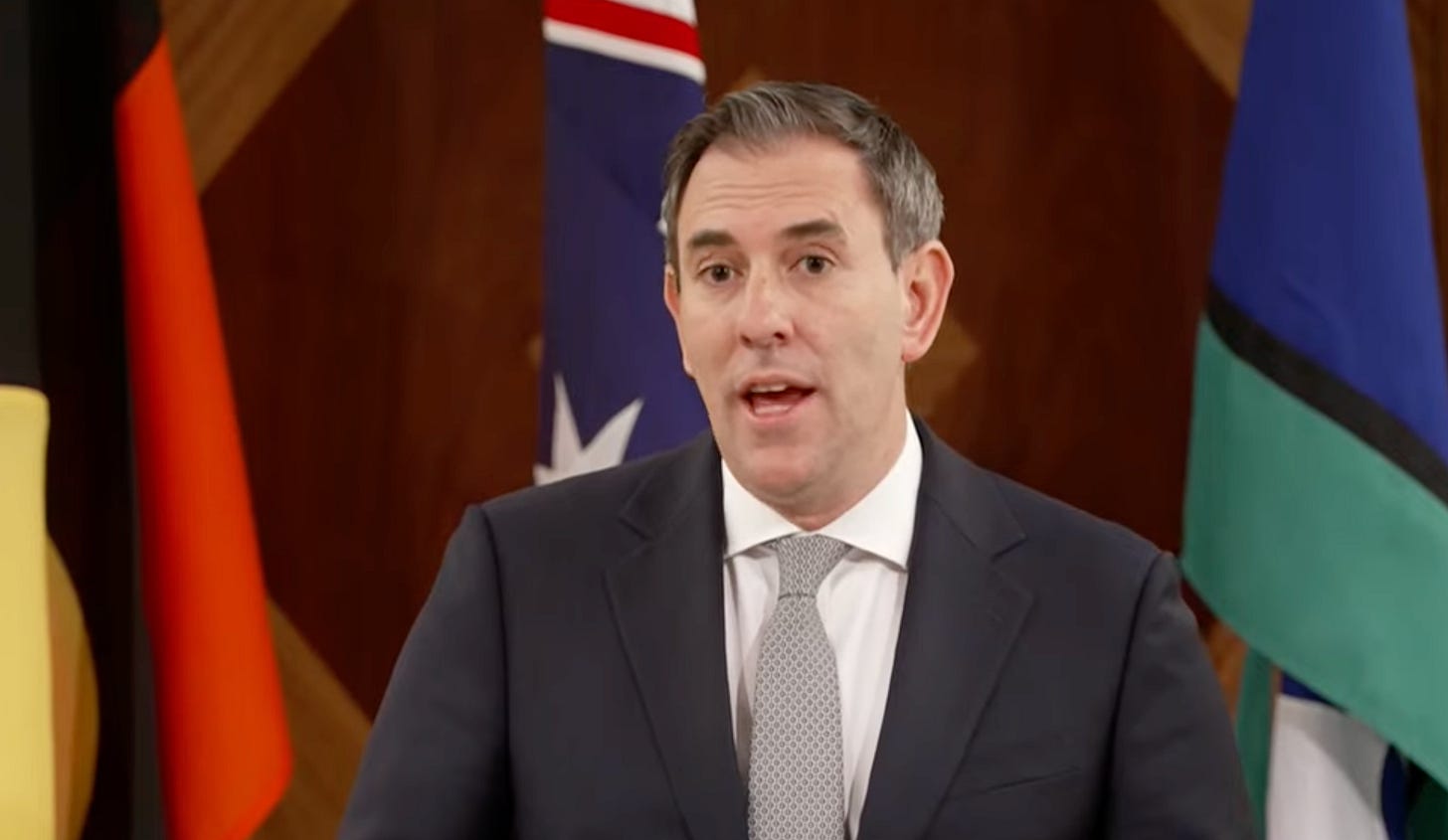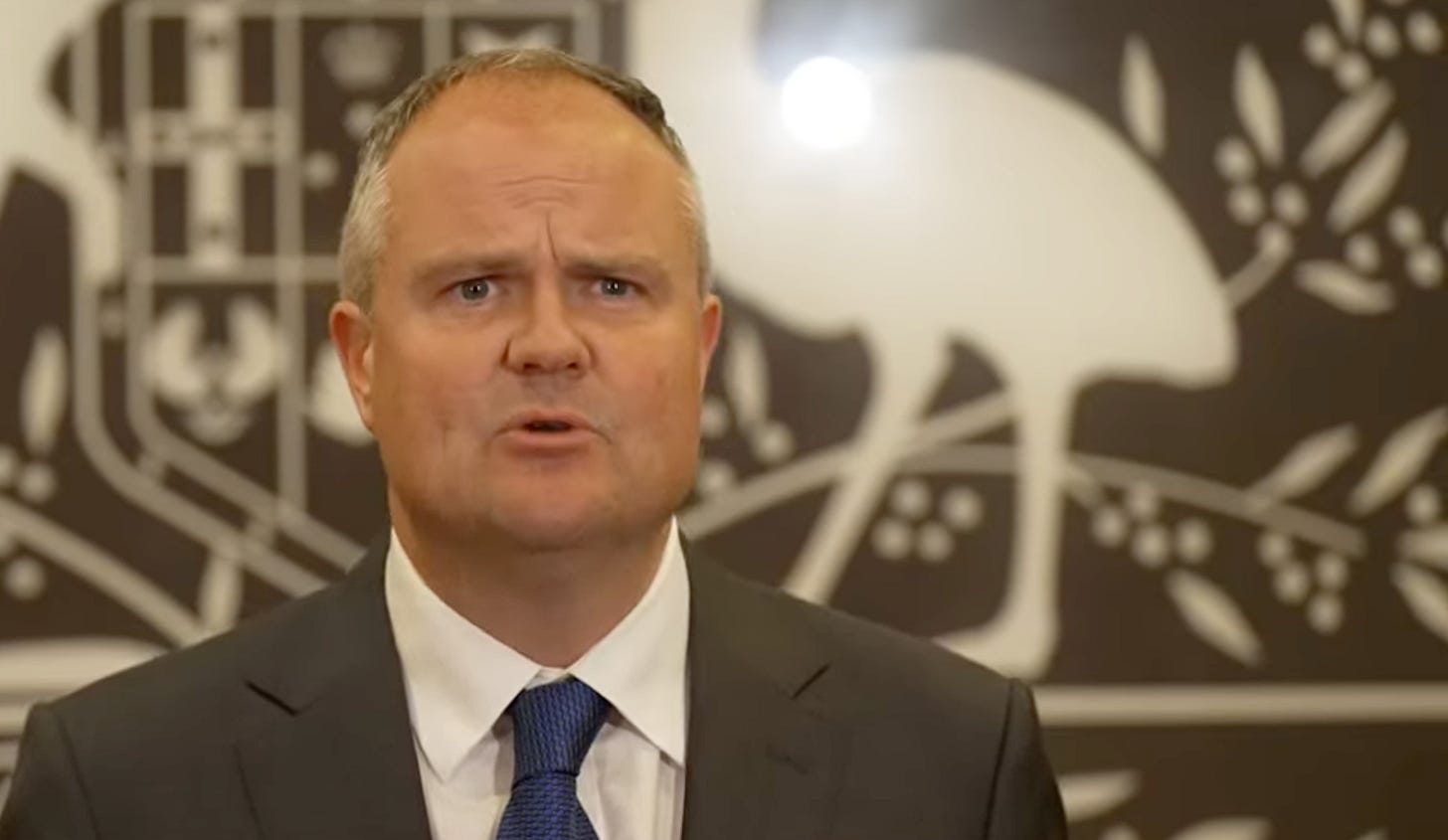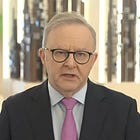RBA Keeps Cash Rate Steady at 3.60% as Treasurer, Opposition Clash Over Inflation Blame
This piece is freely available to read. Become a paid subscriber today and help keep Mencari News financially afloat so that we can continue to pay our writers for their insight and expertise.
Today’s Article is brought to you by Empower your podcasting vision with a suite of creative solutions at your fingertips.
The Reserve Bank of Australia kept interest rates on hold Tuesday while warning inflation may prove more stubborn than forecast, triggering a sharp political clash over who bears responsibility for elevated borrowing costs that continue to squeeze Australian households.
The Monetary Policy Board voted unanimously to maintain the cash rate at 3.60%, citing partial data suggesting September quarter inflation could exceed expectations and signs that consumer spending is strengthening faster than anticipated.
Treasurer Jim Chalmers defended the government’s economic management, pointing to three interest rate cuts already delivered this year and progress bringing inflation back within the central bank’s target range.
Shadow Treasurer Ted O’Brien blamed government spending for persistent inflation, declaring the rate hold a “direct consequence” of what he called the Albanese government’s fiscal policies.
“This is not the outcome that millions of Australian homeowners would have wanted, but it’s certainly the outcome that markets and economists were expecting,” Chalmers told reporters. “Interest rates have already come down three times in six months this year, and that’s a very good thing.”
O’Brien struck a sharply different tone, expressing sympathy for mortgage holders facing continued elevated costs.
“The average mortgage holder will be paying $1,800 more in interest payments every single month compared to when the Coalition was in Government,” O’Brien said. “My heart goes out not only to them today, but my heart also goes out to all of those young Australians who are hoping to get into the property market.”
Truth matters. Quality journalism costs.
Your subscription to Mencari directly funds the investigative reporting our democracy needs. For less than a coffee per week, you enable our journalists to uncover stories that powerful interests would rather keep hidden. There is no corporate influence involved. No compromises. Just honest journalism when we need it most.
Not ready to be paid subscribe, but appreciate the newsletter ? Grab us a beer or snag the exclusive ad spot at the top of next week's newsletter.
The Reserve Bank’s statement highlighted concerns about inflation’s trajectory despite progress from 2022 peaks.
“The decline in underlying inflation has slowed,” the board said. “Recent data, while partial and volatile, suggest that inflation in the September quarter may be higher than expected at the time of the August Statement on Monetary Policy.”
Both headline and trimmed mean inflation fell within the bank’s 2-3% target range during the June quarter. The board said inflation has fallen substantially since peaking in 2022 as higher interest rates worked to balance aggregate demand and potential supply
.
Economic indicators presented a mixed picture. Private consumption is accelerating as household incomes rise and financial conditions ease, the board said, noting that private demand is recovering more rapidly than expected and taking over from public spending as the primary growth driver.
“In particular, private consumption is picking up as real household incomes rise and measures of financial conditions ease,” the statement said. “The housing market is strengthening, a sign that recent interest rate decreases are having an effect.”
Labor market conditions remained tight despite some moderation. Employment growth slowed more than forecast, but the unemployment rate held steady at 4.2% in August. Measures of labor underutilization remained at low rates, and business surveys suggested labor availability has changed little recently.
Wage pressures continued to concern policymakers. While wage growth has eased from its peak, productivity gains remain weak, keeping unit labor costs elevated.
“Looking through quarterly volatility, wages growth has eased from its peak, but productivity growth has been weak and growth in unit labour costs remains high,” the board said.
Chalmers emphasized that households with a $700,000 mortgage are saving about $330 monthly or $4,000 annually from the three rate cuts delivered earlier this year. He said progress on inflation gave the Reserve Bank confidence to reduce rates three times in six months.
“If you look at the progress that we’ve made on inflation on the most reliable measure, we’ve got both headline and underlying inflation at their lowest rates in almost four years, and both of them back in the Reserve Bank’s target band,” Chalmers said.
The treasurer acknowledged inflation’s volatility but said quarterly measures showed it at lows for the past three to four years, reflecting progress made on price pressures.
O’Brien blamed government spending for limiting the Reserve Bank’s ability to cut rates further. He said the government is spending $160 billion extra this financial year compared to when the Coalition was in power.
“This is a direct consequence of the Albanese government’s spending spree,” O’Brien said. “There is a reason why rates have been higher for longer in Australia and that is this Albanese government ensuring that they keep spending and a big government approach is their mode of operation.”
The opposition treasury spokesman said government spending is crowding out the private sector and driving productivity backwards by more than 5%.
“We are seeing productivity go backwards,” O’Brien said. “Productivity has gone backwards by over 5% under this government’s watch, which is why we have seen Australia experience the deepest falls in living standards across the developed world.”
He said Australia’s productivity ranks second worst among OECD countries, leaving little room for the Reserve Bank to adjust monetary policy.
“Unfortunately, under the Albanese government, we have seen fiscal policy run divergent to monetary policy,” O’Brien said. “And at times like now, when Australians are looking for more relief, clearly the RBA has very little wiggle room.”
The Reserve Bank cited global economic uncertainty as weighing heavily on its decision. The board noted slightly more clarity on U.S. tariff policies and responses from other countries, suggesting extreme outcomes may be avoided, but said trade policy developments are still expected to harm global growth.
“Uncertainty in the global economy remains elevated,” the statement said. “Beyond tariffs, a broader range of geopolitical risks remain a threat to the global economy. This could all weigh on growth in aggregate demand and lead to weaker labour market conditions in the domestic economy.”
Chalmers pointed to the Reserve Bank’s acknowledgment of global uncertainty in defending the hold decision.
“What that global uncertainty means is that the Reserve Bank has taken this decision to stay pat for the time being in the face of that uncertainty to see how it pans out,” Chalmers said.
The board said it judged maintaining the current rate level appropriate given signs private demand is recovering, indications inflation may be persistent in some areas and overall stable labor market conditions.
“Financial conditions have eased since the beginning of the year and this seems to be having some impact, but it will take some time to see the full effects of earlier cash rate reductions,” the board said.
O’Brien said market estimates suggest perhaps only one more rate cut remains possible, meaning the average mortgage holder would still pay $1,700 more monthly in interest payments rather than today’s $1,800.
“This provides very little hope for Australians as they look to the future,” O’Brien said. “I am fearful that hopes of further rate cuts are evaporating fast.”
Chalmers said the government delivered budget improvements revealed in final budget outcome figures released Monday, including surpluses and reduced debt.
“We’ve been able to get the debt down substantially, deliver a couple of surpluses and a much smaller deficit, as revealed in yesterday’s final budget outcome,” he said.
The treasurer said the Reserve Bank noted in its statement that the private sector is picking up its role as the primary driver of economic growth, which he called encouraging.
“We’ve been able to keep the economy ticking over. We’ve been able to keep unemployment low. We’ve made very substantial progress on inflation,” Chalmers said. “But we know that there’s more work to do in our budget and in our economy, and that’s the government’s focus.”
The Reserve Bank said it will closely monitor incoming data and evolving assessments when making future decisions, paying particular attention to global economic developments, financial markets, domestic demand trends and outlooks for inflation and labor markets.
“The Board is focused on its mandate to deliver price stability and full employment and will do what it considers necessary to achieve that outcome,” the statement said.
O’Brien also addressed recent Optus telecommunications failures, calling for an independent review of the entire triple-0 emergency call system rather than just examining Optus operations.
“There’s no number which is more important to the Australian people than triple zero,” O’Brien said. “Unfortunately, when you have outages, you have deaths, you have delays in getting to hospital, and you have heightened anxiety among Australians.”
He criticized what he called a lack of urgency from the government in addressing the telecommunications failures.
“The entire triple zero network, the entire ecosystem needs to be investigated and it has to be done independently,” O’Brien said.
Chalmers declined to predict future Reserve Bank decisions, saying treasurers of both political persuasions avoid such commentary for good reasons. He said his job is to focus on improving the budget, reducing inflation and keeping the economy growing.
“We’ve seen interest rates cut three times already this year,” Chalmers said. “When we came to office, interest rates were already rising. Inflation was around double what it is now and rising fast.”
Financial markets showed limited reaction to the announcement, which aligned with economist expectations. The Reserve Bank’s next monetary policy meeting is scheduled for November, when the board will receive updated economic forecasts and additional inflation data.
The current 3.60% cash rate represents the board’s attempt to balance containing inflation while supporting economic growth and employment. The rate has been cut from earlier peaks as inflation moderated from 2022 highs.
Sustaining Mencari Requires Your Support
Independent journalism costs money. Help us continue delivering in-depth investigations and unfiltered commentary on the world's real stories. Your financial contribution enables thorough investigative work and thoughtful analysis, all supported by a dedicated community committed to accuracy and transparency.
Subscribe today to unlock our full archive of investigative reporting and fearless analysis. Subscribing to independent media outlets represents more than just information consumption—it embodies a commitment to factual reporting.
As well as knowing you’re keeping Mencari (Australia) alive, you’ll also get:
Get breaking news AS IT HAPPENS - Gain instant access to our real-time coverage and analysis when major stories break, keeping you ahead of the curve
Unlock our COMPLETE content library - Enjoy unlimited access to every newsletter, podcast episode, and exclusive archive—all seamlessly available in your favorite podcast apps.
Join the conversation that matters - Be part of our vibrant community with full commenting privileges on all content, directly supporting The Evening Post (Australia)
Catch up on some of Mencari’s recent stories:
It only takes a minute to help us investigate fearlessly and expose lies and wrongdoing to hold power accountable. Thanks!










